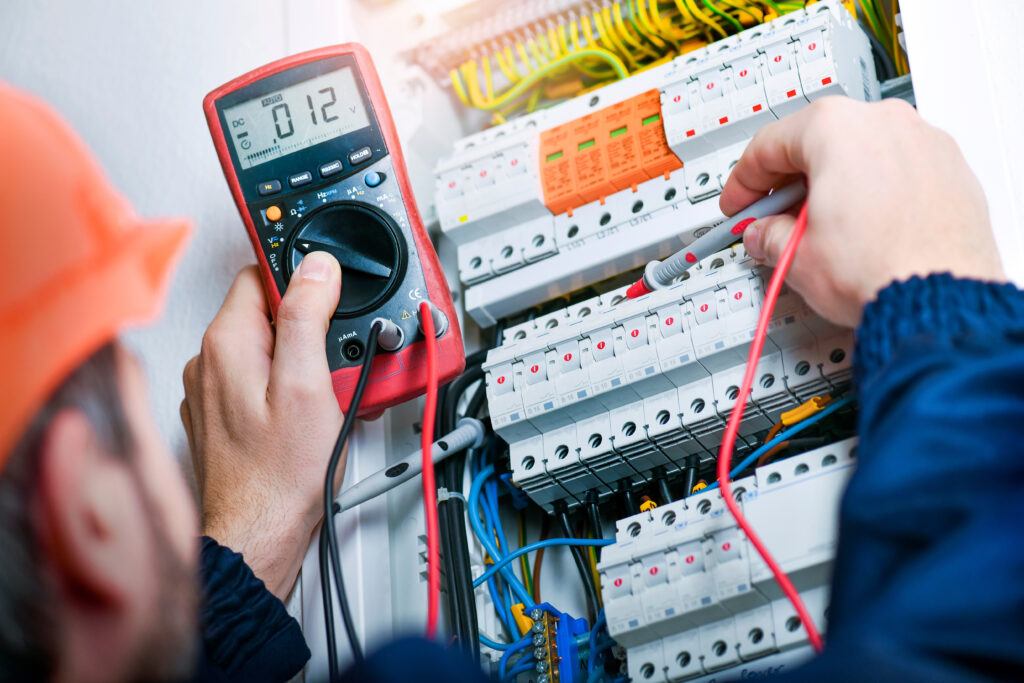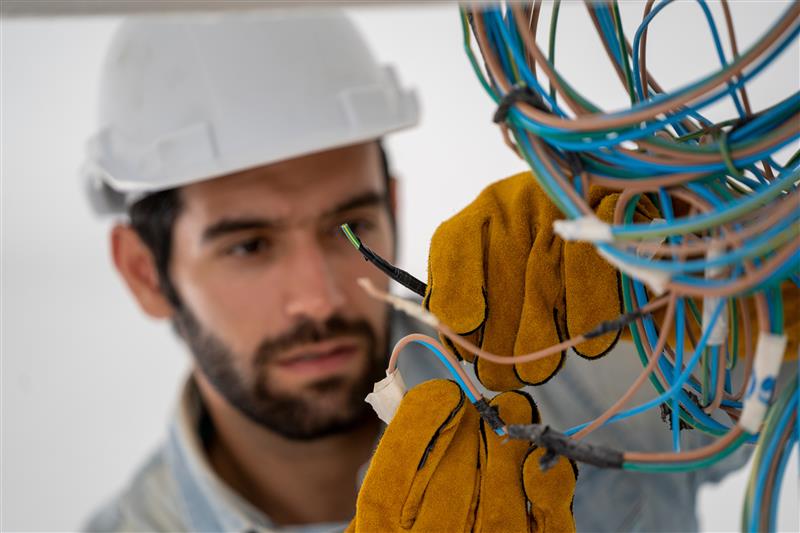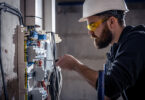Looking after your office’s electrical system is crucial for safety, energy efficiency and appliance longevity. Electrical issues left unchecked can be dangerous, and potentially cause fire hazards and electrical shocks. Regular electrical maintenance helps you find problems early so your place of work is safe for you, your staff and customers, while also reducing energy bills.
In Australia where we face unique climate challenges, a well-maintained electrical system is even more important. This guide gives you the top tips to keep your electrical system in top shape and why you should get professional help. With proactive care, you can protect your office and avoid breakdowns.
Understanding your electrical system
A well-maintained electrical system starts with understanding its parts. These are the circuit breaker panel, wiring, outlets, switches and safety switches. Knowing the layout of your system will help you react quicker in an emergency, like knowing how to turn off power at the main switch. This basic knowledge will also help you explain issues to a professional.
Your circuit breaker panel is the core of your electrical system. It protects your office by switching off power when a circuit is overloaded. Knowing how to reset tripped breakers or what the labels on the panel mean for each circuit is invaluable.
And if you have had a professional inspection in the past, then take the time to review the report to see what was found. This might include old wiring or overloaded circuits which are common in older Australian buildings. Knowledge is key to keeping your system safe and efficient.
Scheduling regular professional inspections
Frequency of inspections
Regular professional inspections are important for a safe and efficient electrical system. Experts recommend inspecting annually or bi-annually, especially for older buildings or those with frequent electrical issues. Regular checks will find potential hazards like deteriorating wiring or overloaded circuits early. Proactive inspections will give you peace of mind knowing your system is compliant with Australian standards.
New buildings with recent electrical upgrades should also have follow-up inspections. This ensures any changes meet the codes and continue to be safe over time.
What professionals look for
Professional electricians inspect every part of your electrical system. This includes looking for wear on the wiring, testing circuit breakers and inspecting safety switches. Old systems like older fuse boxes or aluminium wiring are high risk.
During the inspection professionals will also test smoke detectors to make sure they’re working correctly. These are critical for early fire detection and must meet Australian standards. They will also check the load on circuits to see where power is being unevenly distributed.
Regular inspection is a key to preventing electrical faults and keeping your office safe. It’s simple and cost-effective.

Keeping outlets and switches in good condition
Signs of wear and tear
Outlets and switches are the most used parts of your electrical system, and as a result they are prone to wear and tear. Warning signs like flickering lights, buzzing sounds or discoloured outlets are signs of underlying electrical issues that need professional attention. Scorch marks or warm surfaces on outlets mean overheating or faulty wiring. If switches or outlets are loose or wobbly they are a safety risk and should be checked ASAP.
Being aware of these signs will help you address issues before they become bigger, and have a safer and more reliable electrical system in your office.
How to avoid overloading outlets
Overloaded outlets are a common cause of electrical issues and can cause fires or power outages. To avoid this, don’t connect too many devices to one outlet, especially high-power appliances like heaters, microwaves or refrigerators. Instead, distribute the power usage across multiple outlets in the room.
Using surge protectors will also add an extra layer of safety by preventing damage from power surges. Only use extension cords as temporary solutions and not as permanent wiring. By using it properly and keeping outlets and switches in shape you can extend the life of your electrical system and minimize the risk of hazards.
Ensuring safe use of electrical appliances
Regular appliance maintenance
Appliances are part of our daily lives but neglecting their maintenance can pose safety risks and reduce efficiency. Inspect appliance cords regularly for signs of wear like fraying, cracking or exposed wires. Damaged cords should be replaced by a professional to prevent electrical shocks or fires.
Clean appliances regularly to remove dust and debris that can affect their performance. For example, dryers should have their lint filters cleaned after every use to avoid overheating, fans and heaters should be dusted to ensure proper airflow. Regular checks will extend the life of appliances and keep them safe.
Safety tips when using appliances
To be safe, always follow the manufacturer’s guidelines when using appliances. Keep electrical devices away from water to avoid electrocution, especially in pantry and bathrooms. Use ground fault circuit interrupters (GFCIs) in these areas for added protection.
Unplug appliances when not in use, especially high-energy devices like kettles or toasters. This will not only reduce the risk of fire but also save energy. Don’t use damaged or outdated appliances as they are hazardous. By following these practices you can enjoy the convenience of modern appliances without compromising safety.
Maintaining and testing safety switches
The role of safety switches
Safety switches are your guardian from electrical hazards. They monitor the flow of electricity and will switch off the power if a fault is detected like electrical shock risk or circuit overload. Keeping them in good condition is crucial for your household’s safety.
How to test safety switches
Testing your safety switches is a simple yet important task. It’s recommended to test them at least every 6 months. To do this, locate the safety switch on your circuit breaker panel and press the “test” button. If working correctly the power supply to the connected circuit will switch off immediately. Reset the switch by flipping it back on.
If the safety switch doesn’t trip during testing, then it could be a fault and you should call a licensed electrician as soon as possible. Regular testing will keep your office safe and compliant with Australian regulations.

Preventing electrical hazards outdoors
Safe use of outdoor power points and extension cords
Outdoor electrical hazards are a big risk, especially in Australia’s harsh weather. Always make sure outdoor power points are weatherproof and installed by a licensed electrician. When using extension cords outdoors choose those rated for outdoor use and keep them dry. Don’t run cords through doorways or windows as this can damage the insulation and create a hazard.
Protecting electrical equipment from weather
To avoid damage keep outdoor electrical equipment away from rain, direct sunlight and extreme temperatures. Use outlet covers and store electrical tools in a dry safe place. If outdoor equipment shows signs of wear like frayed cords or cracked casings replace it immediately.
Maintaining trees near power lines
Trees near power lines are a big electrical hazard. Always hire a professional to trim branches near power lines to avoid accidental contact. These will keep your outdoor areas safe and hazard-free.
Recognising signs you need immediate professional help
Burning smells or scorch marks
A burning smell near outlets, switches or your circuit breaker panel is a clear sign of an electrical problem. It’s often a sign of overheating or faulty wiring which can quickly become a fire hazard. Scorch marks or discoloured outlets are signs of severe overheating. If you see these turn off the power to the affected area and call a professional electrician ASAP.
Frequent tripping of circuit breakers
Circuit breakers trip when there’s an overload or short circuit. But if they trip frequently it may be a deeper issue like faulty appliances, overloaded circuits or outdated wiring. A professional inspection is needed to identify and fix the root cause.
Persistent flickering or dimming lights
Flickering or dimming lights is a sign of an electrical problem. This could be loose wiring, an overloaded circuit or main power supply issues. Get them sorted with a licensed electrician today to avoid further problems and keep your office safe.
Keep your office’s electrical systems up and running today!
Looking after your office’s electrical system is for safety, efficiency and peace of mind. Regular professional inspections, being aware of hazards and proactive maintenance will have your system running smoothly and compliant with Australian safety standards. Simple things like testing safety switches, inspecting outlets and using appliances responsibly will go a long way in preventing accidents.
Look after your electrical system, look after your colleagues, and avoid costly repairs or breakdowns. Always go to licensed professionals for any electrical issues and keep your office safe and maintained for years to come.
“The opinions expressed by BizWitty Contributors are their own, not those of BizCover and should not be relied upon in place of appropriate professional advice. Please read our full disclaimer."







